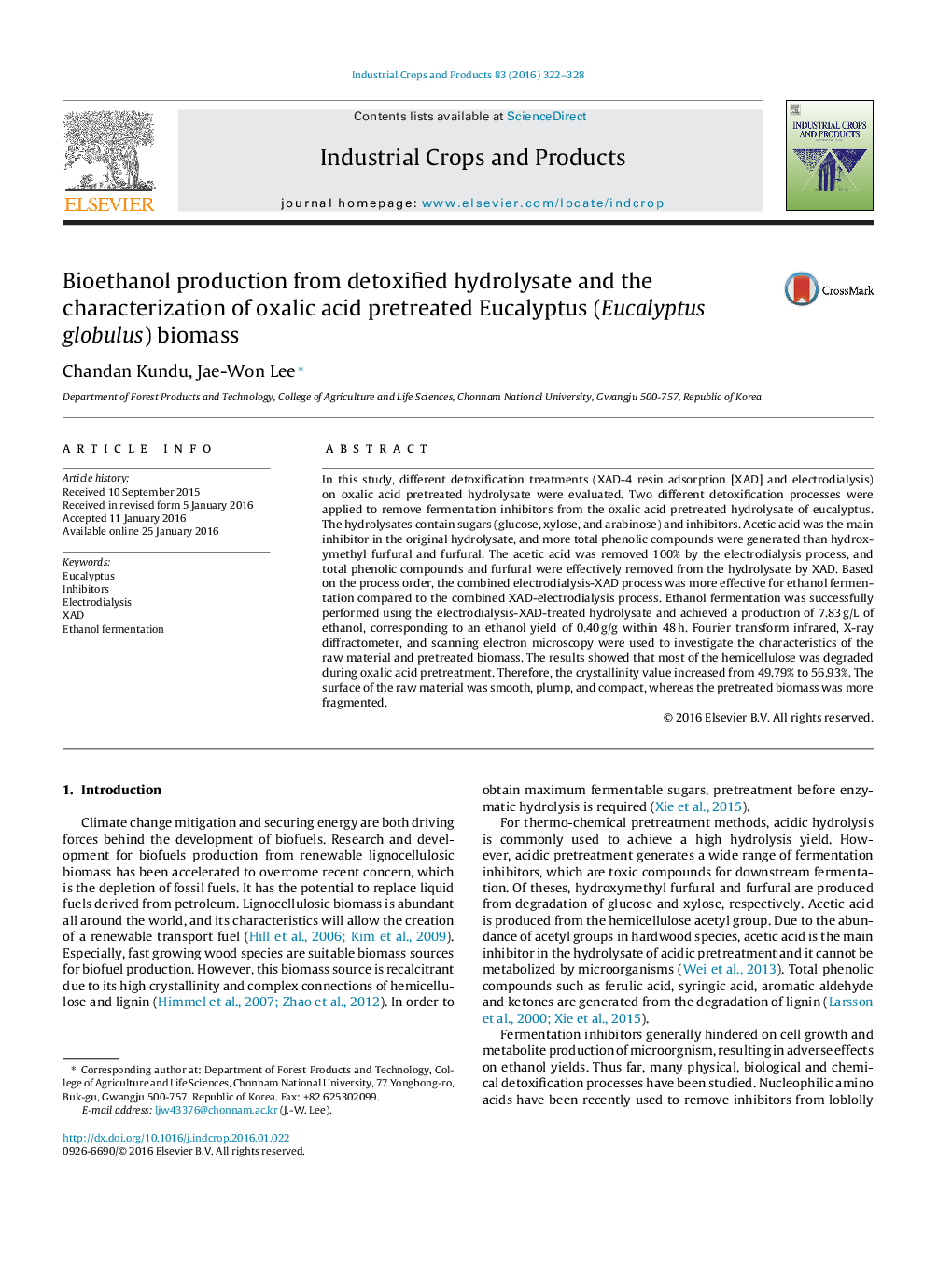| Article ID | Journal | Published Year | Pages | File Type |
|---|---|---|---|---|
| 4512355 | Industrial Crops and Products | 2016 | 7 Pages |
•Most of the hemicellulose was degraded during oxalic acid pretreatment.•Acetic acid was completely removed with electordialysis process (ED).•HMF, furfural, and TPC were removed by XAD-4 resin.•ED-XAD process was most effective for ethanol production.
In this study, different detoxification treatments (XAD-4 resin adsorption [XAD] and electrodialysis) on oxalic acid pretreated hydrolysate were evaluated. Two different detoxification processes were applied to remove fermentation inhibitors from the oxalic acid pretreated hydrolysate of eucalyptus. The hydrolysates contain sugars (glucose, xylose, and arabinose) and inhibitors. Acetic acid was the main inhibitor in the original hydrolysate, and more total phenolic compounds were generated than hydroxymethyl furfural and furfural. The acetic acid was removed 100% by the electrodialysis process, and total phenolic compounds and furfural were effectively removed from the hydrolysate by XAD. Based on the process order, the combined electrodialysis-XAD process was more effective for ethanol fermentation compared to the combined XAD-electrodialysis process. Ethanol fermentation was successfully performed using the electrodialysis-XAD-treated hydrolysate and achieved a production of 7.83 g/L of ethanol, corresponding to an ethanol yield of 0.40 g/g within 48 h. Fourier transform infrared, X-ray diffractometer, and scanning electron microscopy were used to investigate the characteristics of the raw material and pretreated biomass. The results showed that most of the hemicellulose was degraded during oxalic acid pretreatment. Therefore, the crystallinity value increased from 49.79% to 56.93%. The surface of the raw material was smooth, plump, and compact, whereas the pretreated biomass was more fragmented.
